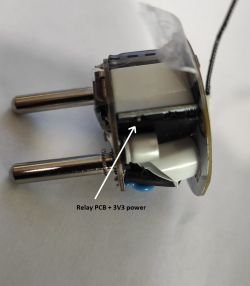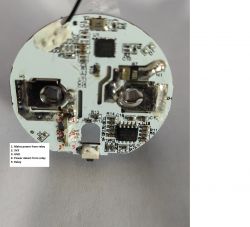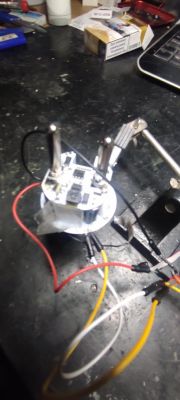The Nous Smart socket A1 contains a BK7231N and BL0942 power monitor. The BK7231N is soldered to one of the pcbs and is not on a separate module.
Disassembly of the device is easy as there is a triangular screw under a paper label stuck onto the transparent plastic part of the socket.
Inside are 3 pcbs, one contains a switched mode 12V power supply, an intermediate board has the device relay and a S47B dc/dc power supply providing 3.3V to the top board that contains the BK7231N and BL0942.
Flashing the chip is achieved using the python uploader
Connections are as the same as described in the Qiachip Smart Switch - BK7231N / CB2S - interior, programming post with the exception of the 5V supply which is 3V3 from the 3V3 connection on the USB dongle.
I also had to add a 10K pullup resistor from CEN to 3V3 and a switch to pull down to 0V to reset.
Connections on the unit are:
Relay: P26
Switch: P9
LED: P6
There are mountings on the device for 3 leds although only D3 is mounted. The other leds are all wired in parallel.
The BL0942 calibration program works correctly as described elsewhere.





The power detect is the feed to the BL0942
Disassembly of the device is easy as there is a triangular screw under a paper label stuck onto the transparent plastic part of the socket.
Inside are 3 pcbs, one contains a switched mode 12V power supply, an intermediate board has the device relay and a S47B dc/dc power supply providing 3.3V to the top board that contains the BK7231N and BL0942.
Flashing the chip is achieved using the python uploader
Connections are as the same as described in the Qiachip Smart Switch - BK7231N / CB2S - interior, programming post with the exception of the 5V supply which is 3V3 from the 3V3 connection on the USB dongle.
I also had to add a 10K pullup resistor from CEN to 3V3 and a switch to pull down to 0V to reset.
Connections on the unit are:
Relay: P26
Switch: P9
LED: P6
There are mountings on the device for 3 leds although only D3 is mounted. The other leds are all wired in parallel.
The BL0942 calibration program works correctly as described elsewhere.





The power detect is the feed to the BL0942
Cool? Ranking DIY







